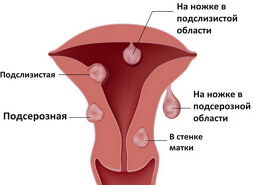Dysfunctional uterine bleeding

Dysfunctional bleeding is a uterine bleeding caused by uterine diseases, systemic diseases, the cause of which is not pregnancy. In most cases, these uterine bleeding appear due to a violation of the background of the hormones of the ovaries. Dysfunctional bleeding is a very common problem among women aged 36 to 50 years.
What are the causes of dysfunctional uterine bleeding?
It is necessary to know that uterine bleeding is an inseparable symptom of a number of gynecological diseases. From an arbitrary miscarriage of pregnancy to the most life-threatening tumors of the uterus. Dysfunctional bleeding can signal the presence of chronic inflammation of the appendages, or pelvic organs. Also, this disease can occur against the background of improper coagulation of the blood, due to imbalance in the activity of the endocrine glands, including the hypothalamus, pituitary gland, ovaries and thyroid gland. In addition, it can be caused by prolonged use of certain hormonal and non-hormonal drugs, a violation of the liver. Also various infectious diseases, intoxication of the body, fatigue, both mental and physical, using an intrauterine device, stress.
There are dysfunctional bleedings at the age of 13-17 years, at the climatic age and in childbearing age. These bleedings in adolescents appear mainly due to abnormal ovarian activity. Women of reproductive age due to inflammatory diseases of the pelvic organs. Women who have reached the climatic period, suffer from uterine bleeding due to a violation of menstrual function.
Treatment and prevention of dysfunctional bleeding
Treatment of this disease includes two stages. This is the stop of bleeding, as well as the prevention of bleeding. The choice of the method of hemostasis depends on the patient's condition. With the presence of severe symptoms of hypovolemia and anemia, prolonged bleeding shows surgical haemostasis. This is an endometrial scraping, after which the scrapes are examined. In addition, a therapy is carried out, which is aimed at eliminating anemia, as well as restoring hemodynamics.
Hemostasis with hormonal drugs is performed in the case of a patient with moderate severity. Menstrual discharge is quite abundant after the administration of estrogen-progestin drugs is discontinued. To reduce blood loss use calcium gluconate, if necessary - reducing uterine funds. Anti-anemic therapy is performed during conservative hemostasis. This appointment of vitamin C, vitamin B, iron containing drugs.
In order to prevent recurrence of this disease, possible measures are taken to develop a normal ovulatory menstrual cycle that are carried out on an outpatient basis. The most optimal results are achieved during the use of estrogen-progestogen drugs. Also of great importance are measures that are aimed at improving the patient's body. This is physical training, hardening, sanitation of foci of infection, etc. Great nutrition is important( limiting fatty and sweet food, vitamin therapy, etc.).Those women who suffer from dysfunctional uterine bleeding should definitely be under close medical supervision.
Forecast, with all the necessary rules, as a rule, it is favorable for women. On the development of the body of a woman during puberty, anemia can have a negative effect. If there is no adequate treatment, failures in the function of the ovaries can lead to infertility. It is recommended that all women undergo gynecological examinations on a regular basis, so that later there are no additional health problems.



